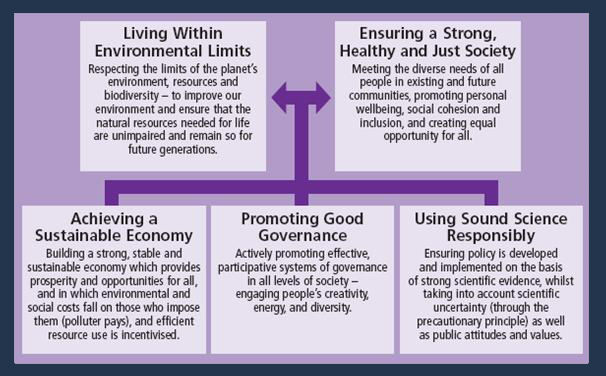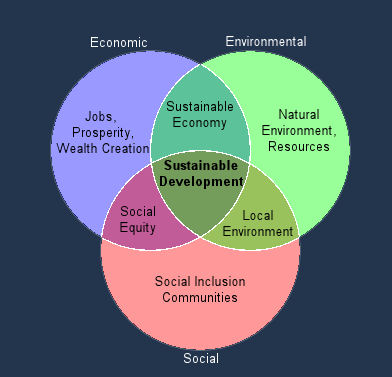Project Background
Sustainability can be described as a quality which something has. Sustainable development can subsequently be defined as the process over time whereby sustainability is achieved. In the urban context a sustainable development is one that meets the needs of the present population without compromising the needs of the next generation. It is the aim of sustainable urban development to provide "more effective and efficient services which maintain public health and welfare, whilst reducing harmful resource and environmental impacts" (T.J.Foxon et al. 2002).
Incorporating sustainability in urban development is extremely complex as it requires the consideration of the social, economic and environmental impacts on the city or area being developed.
Sustainability is measured using principals, criteria and indicators. (DEFRA. 2005) Principles are usually abstract, idealistic statements that provide goals in order for sustainability to be achieved. Criteria are a set of factors which can be used to make a judgement about the relative sustainability of a number of options or scenarios. Indicators are measurable past and current values for specific criteria and can also be used to set standards against which future performance can be assessed. It is usual for criteria, and the indicators used to measure them, to change quickly, however, the principles on which the criteria are based usually remain fixed (T.J.Foxon et al, 2002).

In March 2005 the Secretary of State for Environment, Food and Rural Affairs released a new document, "Securing the Future" which outlined a new set of sustainability principles (Fig 2) which would replace those presented in 1996. It is these new principles, and the 68 new indicators associated with them, which the Government, the National Executives (Scottish, Welsh and Northern Irish assemblies) and local councils will use to gauge the sustainability of any development projects (Defra, 2005).
These principles will also form the basis upon which development project decisions will be based. However "the very nature of decision making has been changed by the contemporary emphasis on sustainability" as any decision made will have to include these complicated economic, social and environmental considerations. (Sahota & Jeffrey, 2005).
A decision support tool (DST) is simply any tool which is used to aid decision making as part of a formal or informal decision-support process. The use of DSTs has become increasingly more popular in the decision making process. This is mainly because it is possible to install and use them on many personal computers and also due to their ability to manage large amounts of complex data (Kapelan et al, 2005).
With this in view, a number of decision support tools have been created to address the complex issues involved in sustainable development decisions. There has been huge effort and resources put into creating these DSTs, yet despite this most are never or hardly ever used (Sahota & Jeffrey, 2005).
